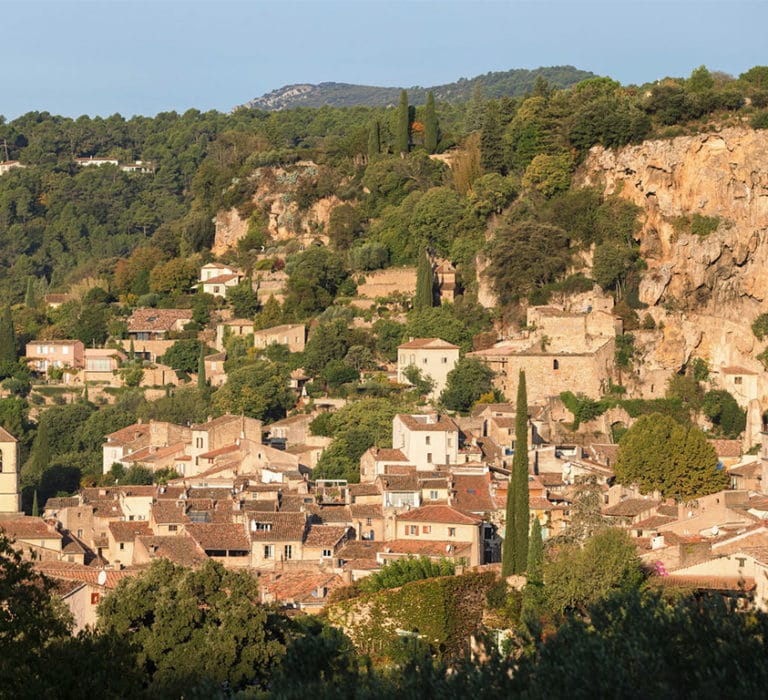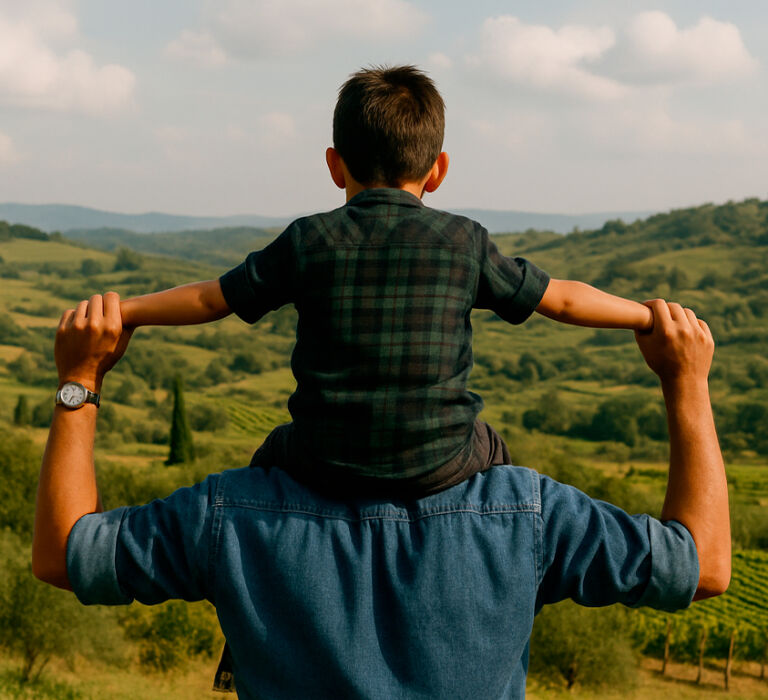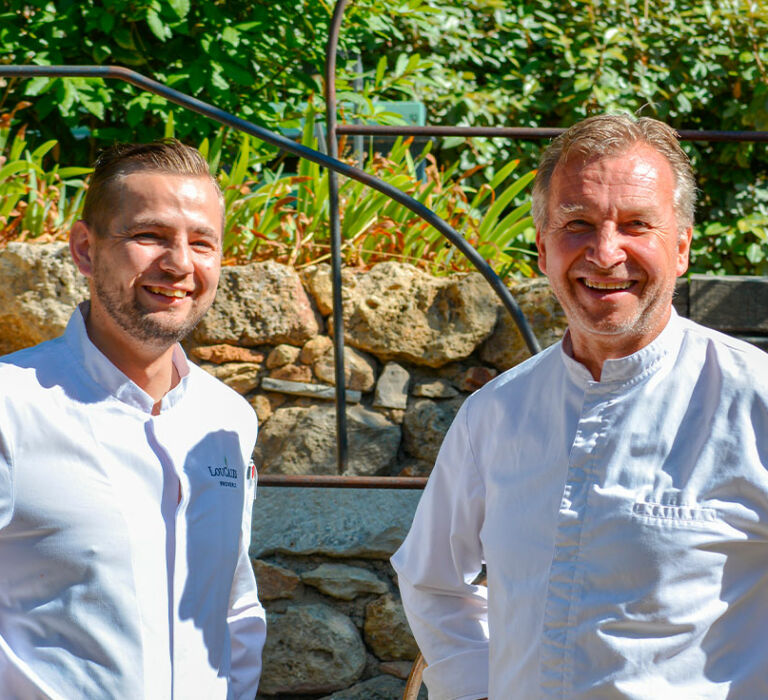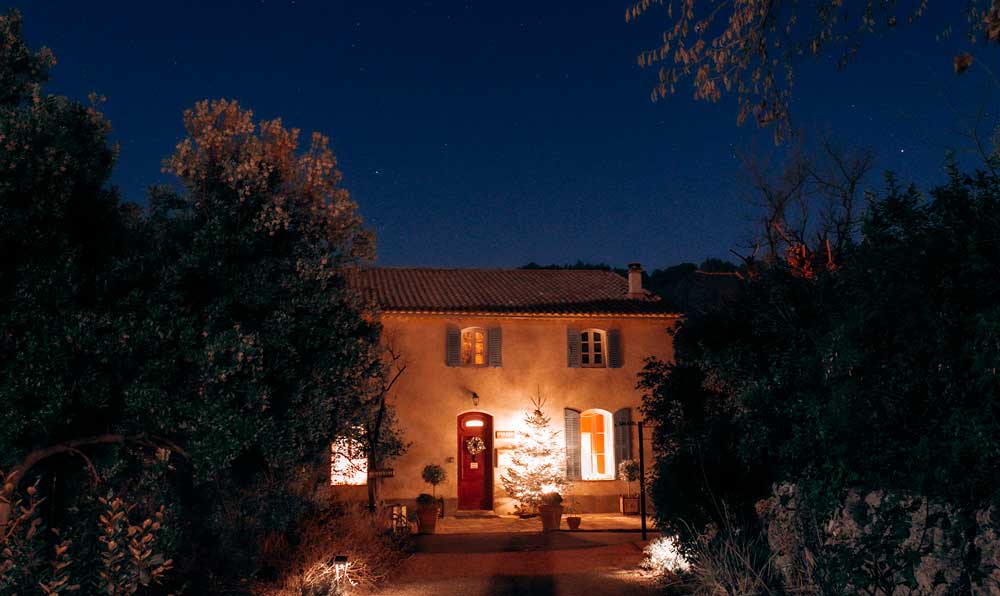Truffle Hunting & Tasting in Aups
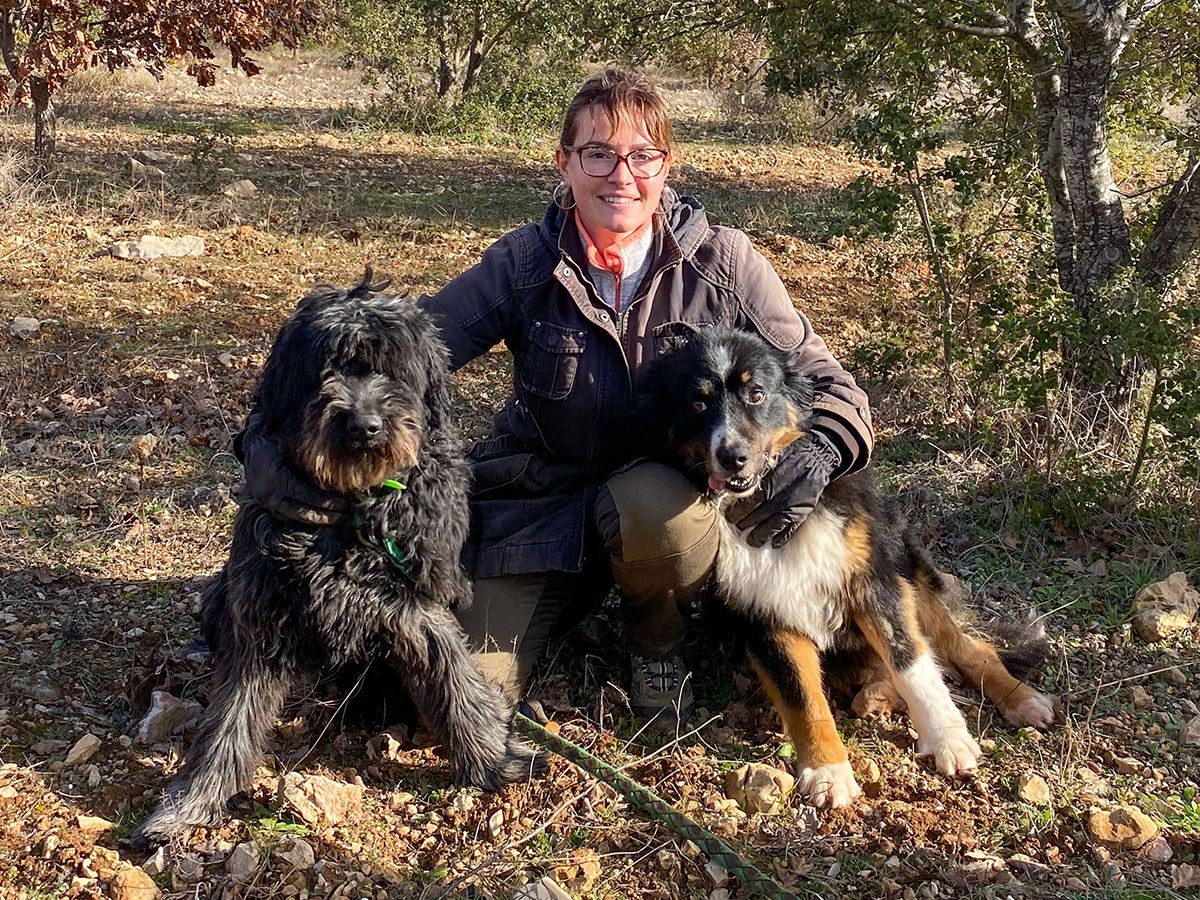
For over 25 years, the Canut family has been passionately cultivating black truffles on their estate in Aups, at the foot of the first Verdon foothills. Each winter, Patrick and his daughter Lisa roam the rows of truffle oaks with their trained dogs, in search of the precious black diamond buried beneath the earth.
Join them and discover this ancestral know-how by taking part in the truffle hunt — known as cavage. Once you’ve unearthed your finest find, enjoy tasting it and savouring its full aroma. A rare and convivial experience, offered during truffle season from December to mid-March.
It’s a family matter
A beautiful town on the way to the Gorges du Verdon, Aups hosts the most prominent truffle festival in France. The limestone and sandy soils of the Haut-Var region are perfectly suited to the cultivation of ‘tuber melanosporum’, the delicious black truffle. Patrick Canut, who was once a baker and pastry chef in Aups, chose to set up his truffle farm there 25 years ago as a hobby. It is now his profession. Within his twelve hectares of land, 1.5 hectares are devoted to the planting of green and white oaks to encourage truffle growing, while over 1000 olive trees fill out the rest of the land, which then produce olive oil.
It is a family affair for the Canuts, since Patrick’s wife and three children supported him tirelessly during his shift from baker to farmer. Lisa Canut, a pharmacy assistant that works locally from June to November, particularly enjoys getting stuck in to the harvest and helps her father every year with the digging, the workshops, and their market stall – since 100% of their production is sold directly to the customer.
The cultivation of black truffles
If the white truffle (tuber magnatum) is only found in the wild, the black truffle (tuber melanosporum) can be cultivated, as can the traditional Burgundy truffle (tuber uncinatum) and the summer truffle (tuber aestivum).
Around Aups, specialised nurseries tend to grow oaks or other mycorrhizal tree species, which truffle mycelium has been protected against. Therefore the planting ground must have a high ‘pH’ value, made up of clay-limestone, and have the right circumstances for good drainage. Once the oaks are in the ground, it takes a while for the truffles to grow. In fact, the first truffles rarely appear before the 10th yearly cycle. Every winter after the harvest, the land has to be reworked. The fields are then enriched with truffle traps, made from a mixture of earth and crushed truffles, positioned near the roots of the trees. The truffle is usually seeded in spring, then develops until summer. It is therefore essential to ensure good irrigation from March to August.
Tree pruning only occurs every 3 or 4 years; and of 100 trees planted, only half will produce truffles. Furthermore, successive droughts in the Haut-Var and the high population of wild boars threaten the harvest every year. This also heightens the attraction of the truffle: it is rare, therefore expensive, its rich flavour has thrilled chefs and gourmet foodies for centuries.
The ‘cavage’ (digging) of the truffle
The black truffle matures throughout the winter. Truffles harvested in December offer sweet and subtle flavours, while those from February have more of a rich character. At harvest time, Patrick and Lisa Canut work from Monday to Wednesday, which allows Lisa to set up a stall at the regional markets at the end of the week – or more particularly the Aups market every Thursday.
During the harvest walk around their oak plantation, Patrick and Lisa are accompanied by their two dogs, Jin (11 years old) a Bernese Mountain Dog crossed Border Collie, and Némo (5 years old) a Lagotto Romagnolo. It is the dogs’ job to sniff out and locate the truffles while the father and daughter dig to search for and extract them. The dogs then get their reward, of course. Through the centuries dogs have proven to be the most effective tool for truffle hunting, rather than the pig, flies, or other particularly fun ancestral methods.
On a plot of land, not all the trees produce truffles, therefore there are no rules, and truffle growing is entirely random. When a dog has a hunch, it scratches the ground, perhaps even taps the area, and waits for its master to join him. Sometimes you have to dig deep – if the truffle is buried or entangled in the roots of trees – with care and delicacy so as not to damage any roots of parts of the tree.
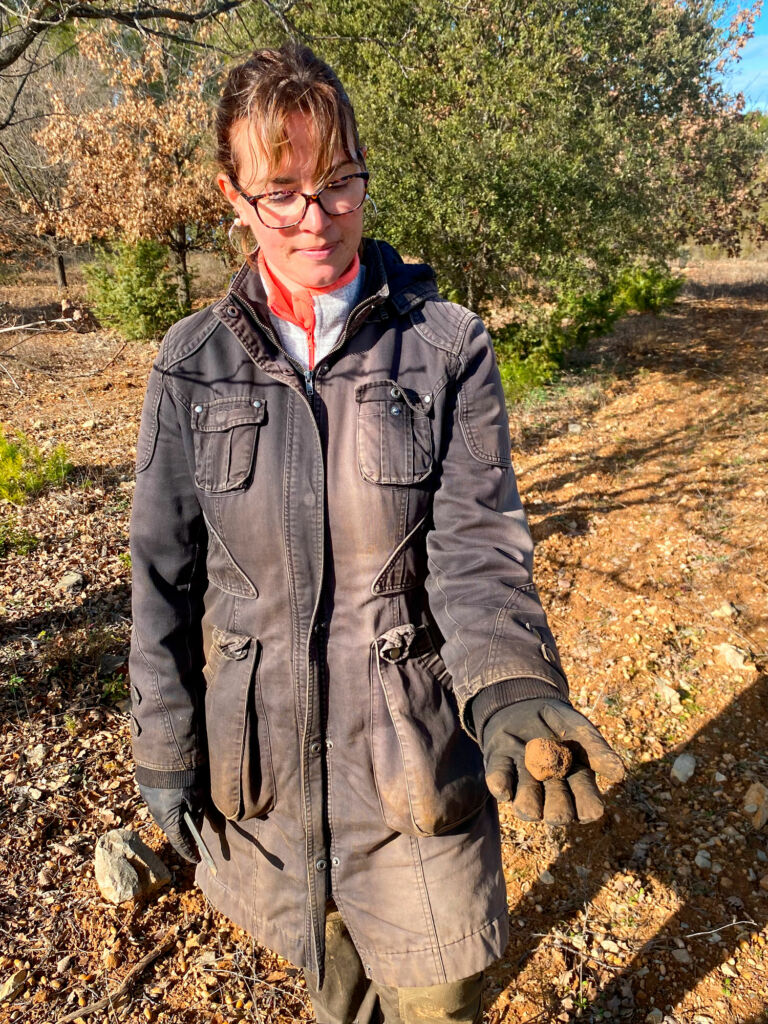
Get involved with this unique experience between nature, man and animal – and visit the truffle farm of the Canut family!
Prices
Useful information
- Period: From 1 December to 15 March
- Days: Monday, Tuesday, Saturday, Sunday
- Times: from 1.30 pm to 3.30 pm
- Location: Aups (20 minutes by car from Cotignac)
Booking request
Emilie Rousseau takes you on the “black diamond” road from Aups to Cotignac, for Monaco Info.
